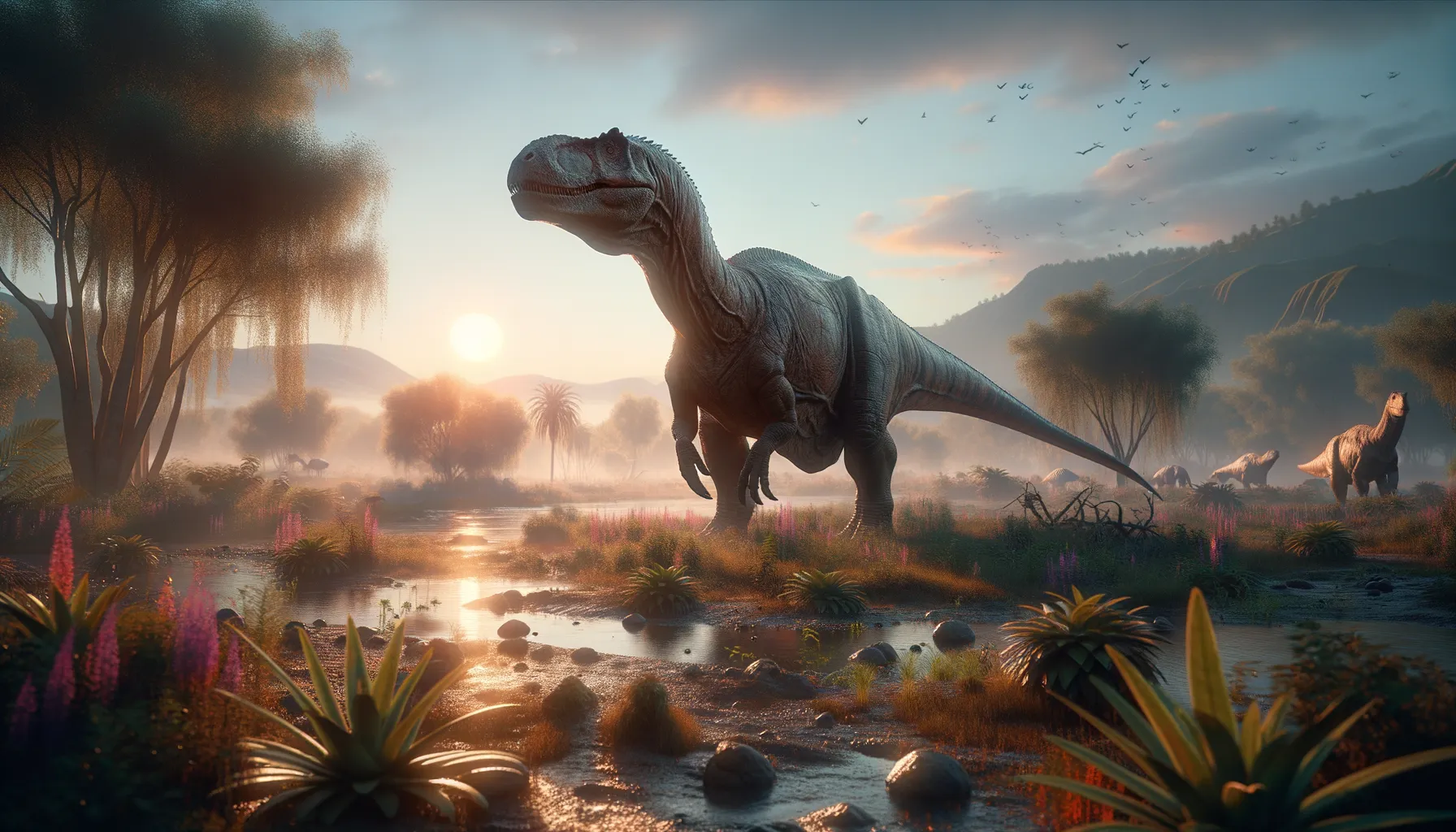
Pinacosaurus
Armored tank of the Cretaceous world!
Period
Cretaceous
Length
Measured approximately 5 meters long.
Height
Stood about 1.2 meters tall at the shoulder.
Weight
Weighed around 1 to 2 tons.
Pinacosaurus was a heavily armored dinosaur that roamed the earth during the Late Cretaceous period. This herbivore is noted for its squat body protected by bony plates and a tail club for defense against predators. Its fossils have been primarily uncovered in Mongolia, providing rich insights into its lifestyle and ecology. Despite its formidable appearance, it was a peaceful plant-eater with a penchant for greenery.
Diet
Pinacosaurus was herbivorous, feeding mainly on low-lying plants. Its beak-like mouth helped it nip leaves and shoots.
Hunting
As an herbivore, it did not hunt other animals. Pinacosaurus relied on dense vegetation for sustenance and rarely moved far from food sources.
Environmental challenges
Pinacosaurus faced numerous predators, such as large theropods, that threatened its survival. Its armor and tail club acted as crucial defense mechanisms. Additionally, it contended with changing climates in its habitat, possibly adapting its diet to include a broader range of plant types. Scarcity of resources during certain periods required efficient foraging strategies.
Speed
Slow-moving due to its heavy build.
Lifespan
Expected to live up to several decades.
First discovery
First discovered in 1923 in Mongolia.
Fun Facts
- Pinacosaurus was a medium-sized dinosaur that lived during the Late Cretaceous period around 75 million years ago.
- It was part of the ankylosaur family, known for their armored bodies and club-like tails.
- Pinacosaurus had a unique feature—some fossils show that they had holes in their snouts, which scientists believe might have helped them breathe better.
- This dinosaur was a herbivore, meaning it only ate plants, and it likely used its beak-like mouth to chop leaves and vegetation.
- Fossils of Pinacosaurus have been found in the Gobi Desert in Mongolia and China, suggesting they lived in dry desert-like climates.
- Young Pinacosaurus dinosaurs are some of the best-known dinosaur children due to the discovery of multiple juvenile fossils found together.
- Pinacosaurus' name means 'plank lizard,' which refers to the flat, plank-like armor plates that covered its back.
Growth and Development
Pinacosaurus hatched from eggs, with young ones likely growing rapidly to avoid predation. Initially vulnerable, juveniles developed thicker armor as they matured, enhancing their survivability. Growth rates might have varied based on resource availability and environmental conditions. The presence of juvenile fossils suggests that they might have formed groups for additional protection.
Habitat
Pinacosaurus inhabited semi-arid regions, where open plains and sparse forests provided sufficient plants for food. These areas were characterized by seasonal changes, affecting plant availability. Fossils suggest they lived in herds, which offered safety in numbers. Migration in search of food and water might have been a necessity during dry spells.
Interaction with other species
Pinacosaurus shared its habitat with various dinosaurs, including potential predators like velociraptors. Its defensive capabilities meant it could coexist with these threats relatively successfully. Fossil evidence hints at possible herd behavior, aiding in spotting predators early. Interactions with non-predatory species included competing for vegetation, occasionally leading to territorial disputes.
Natural lifespan
Pinacosaurus likely had a natural lifespan of several decades.
Reproduction
Egg-laying was the primary mode of reproduction for Pinacosaurus. Nesting sites were likely in secluded areas with minimal predator intrusion. Parental care is not well-documented, but herd structures might have offered some defense for young ones. Clutch size and frequency remain undetermined.
Social behaviour
Herding behavior indicates social structures that provided defense against predators. Living in groups could mean communication through vocalizations or visual signals. Juveniles might have been integrated into herds, receiving protection and guidance. Social dynamics within groups could include mating and cooperative foraging.
Fossil locations
Fossils of Pinacosaurus have been predominantly found in Mongolia, specifically in the Gobi Desert. Other significant findings have occurred in China, contributing to the understanding of its distribution. The preservation of juvenile and adult specimens offers insight into its lifecycle and development. These locations are critical for reconstructing its habitat and ecological role.
